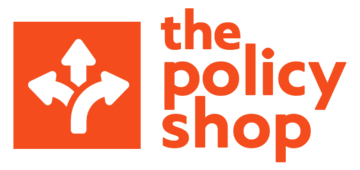2. What Role does External Research Play?
Research is creating new knowledge. - Neil Armstrong
Granting revenue insufficiency is a perpetual problem, if members of Council weren’t getting the kind of revenue information or options they wanted from staff, they could buy it from suppliers or pay for primary research to create new options, moving beyond what we already know about own source revenue. This article looks at the extent to which external third parties are retained to supplement staff capacity to mobilize revenue. It is organized into three parts:
What role do private suppliers currently play in municipal finance?
How have contracted studies contributed to the field of municipal revenue?
How do external parties other than suppliers add to revenue knowledge?
What role do private suppliers currently play in municipal finance?
Many financial procurements fall within the categories of routine, functional and needs-based, i.e. implement software or supply insurance. Buying things that already exist and we know they exist.
The procurements of interest here are different: Projects undertaken to supply more information or a different perspective and advice about how to accomplish something; where Council’s response to the findings determines a project’s impact and is entirely discretionary. If you hire a tax sale firm, you have a property to put on the market. If you hire policy advisors or financial researchers to do a study, they can’t tell you what they’re going to find, and buying information doesn’t mean you have to use it.
The kind of financial studies municipalities contract out most frequently cluster around cost control and revenue supply.
While there is more overlap than implied in the expense-focused strategies on the left, revenue analysis is secondary.
2. How have contracted studies contributed to the field of municipal revenue?
Within the field of revenue mobilization, rate studies are the most frequently undertaken type of work, seeking to solve for ‘x’ - the rate - in a way that is documented and defensible, (unsurprisingly, their subjects are highly regulated and litigation-prone). Features common to rate studies include:
Narrow focus: Most studies price a single activity, service, or propose rates for a single revenue source, or a subset of a source, i.e. building permits.
Applied mathematics: Inputting parameters, data and conditions into a financial model predictably outputs a rate.
Policy considerations are back-end loaded: The most common kind of filters for reflecting local priorities in these studies are discounts for areas, uses and groups and for competitive pricing relative to select peer municipalities. Rate structures built to achieve non-financial objectives are also gaining traction, i.e. inclining block rates for water charges promote conservation.
Back to the question, rate studies are based on what is already known about municipal revenue - there is no question about whether commissioning a study produces a rate and - far as we know - adding to the body of revenue knowledge is not part of the ‘Scope of Work.’ Study suppliers have no doubt advanced the body of specialized knowledge in these areas, levelling up their clients’ results, but the proprietary, private nature of their discoveries limits their potential to advance the level of general practice in the field.
3. How do external parties other than suppliers add to what we know about revenue?
In some fields, the post-secondary education sector and double-blind peer-reviewed journals shore up research and development efforts with breakthrough discoveries that change the theory and practice of a discipline. This kind of practical, primary research and critical analysis is arguably lacking in Canada’s municipal sector. Although the number of report writers has grown since the onset of the pandemic, demonstrable impacts of their work on how practitioners operate and decision-makers think are less forthcoming. Despite its applicability, there are persistent barriers in using research from abroad, (what’s new, where to find it, how to get access to a complete text, etc.).
Currently, two groups lead municipal revenue research: international non-governmental organizations, (IOs) such as UN-Habitat and the World Bank, through their global development work and graduate as well as post-graduate students through theses and other research papers. It is unclear how many municipalities benefit from their research findings in either case, and insofar as the information produced is unsolicited, we can’t assume there’s a municipal interest in the results, either.
With revenue responsibilities ill-defined internally, YIELD 1 suggested the preconditions for expecting revenue change to come from inside government are not necessarily in place. This article has not found that it’s not clear that it’s coming from external third parties either. The research gap suggests that municipalities may experience a level of resignation about increasing funding through own sources and that significantly more information needs to be known about the terms governing Council interest in increasing inflows from locally-controlled sources. In short, the null hypothesis is municipalities don’t have more revenue, or enough revenue, and are not pursuing activities that would help them maximize yields and solve the problem of scarcity because they are not as desperate as they report. Whether that’s because they think saying they don’t have enough directs attention to other governments’ transfer levels, tax powers and spending jurisdiction, disputes the terms of the debate (they have no political incentive to charge their neighbours more without assurance that they’ll be the ones deciding where to spend it) or deters the public from making big, bold new spending requests or expecting what municipalities do to substantively change are threads other observers may wish to interrogate.
